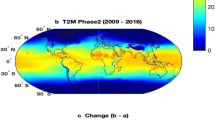This article describes methods for expanding the numbers and ranges of reproducible values and improving the functionality of the state primary standard of units of relative humidity of gases, molar (volume) fraction of moisture, and dew/frost point temperature (DPT) GET 151-2014. As a result of the studies, the state primary standard of the units of relative humidity of gases, molar (volume) fraction of moisture, DPT, and hydrocarbon condensation temperature (HCT) GET 151-2020 was developed and approved, which included a set of reference generators that reproduce the DPT and condensation temperature of hydrocarbons at high pressures of the working gas. The work presents the description of GET 151-2020 and the complex of reference generators included in it, which implement the reproduction of units of the DPT and HCT, taking into account the influencing factors on the working gas pressure. The metrological characteristics of GET 151-2020 are analyzed. A budget of the measurement uncertainty is compiled when reproducing the DPT and HCT. The state verification scheme of tools for the measurement of gas humidity and HCT was developed and approved. Topical issues of ensuring the uniformity of measurements in the field of hygrometry are resolved. The tasks of the metrological support of means for measuring the dew point temperature and condensation temperature of hydrocarbon gases at high pressures of the working gas are implemented. The results obtained can be useful in creating an experimental base for studying the physical properties of technical and natural gases and approving state reference data in a wide range of pressures and temperatures of the working gas.

Similar content being viewed by others
Notes
RMG 75-2014. State System for Ensuring Uniform Measurement. Humidity measurements of substances. Terms and Definitions.
Order of the Federal Agency for Technical Regulation and Metrology No. 868 dated May 6, 2020 "On approval of the state primary standard of units of relative humidity of gases, molar (volume) fraction of moisture, dew/frost point temperature, and hydrocarbon condensation temperature."
GET 151-2020. State primary standard of units of relative humidity of gases, molar (volume) fraction of moisture, dew/frost points temperature, and condensation temperature of hydrocarbons. URL: https://www.vniiftri.ru/standards/teplofizicheskie-i-temperaturnyeizmereniya-perv/get-151-2020-gosudarstvennyy-pervichnyy-etalon-edinits-otnositelnoy-vlazhnosti-gazov-molyarnoy-obemn/(date of reference: 08/05/2022).
GOST R 8.938-2017. State System for Ensuring Uniform Measurement. National standard. Standard reference data. Liquid and gaseous propane. Thermodynamic properties, coefficients of dynamic viscosity and thermal conductivity at temperatures from 86 K to 700 K and pressures up to 100 MPa.
GOST 8.547-2009. State System for Ensuring Uniform Measurement. State verification scheme for gas humidity measuring instruments.
Order of the Federal Agency for Technical Regulation and Metrology dated December 15, 2021 No. 2885 "On approval of the state verification scheme for measuring instruments for gas humidity and hydrocarbon condensation temperature."
References
N. I. Dubovikov, O. A. Podmurnaya, and I. A. Sokov, Meas. Tech., 28, 670–673 (1985), https://doi.org/https://doi.org/10.1007/BF00862176.
G. A. Derevyagin, A. M. Derevyagin, and S. V. Seleznev, Topicality and problems of measuring the hydrocarbon condensation temperature in natural gas, GAS Ind. Russ., No. 10, 64–68 (2017), https://elibrary.ru/ZQJKQN.
A. G. Lykov, A. M. Derevyagin, and S. V. Seleznev, Dew point analyzer for water phases and heavy hydrocarbons HYGROVI-SION-BL, GAS Ind. Russ., No. S(680), 79–83 (2012), https://elibrary.ru/SZWOUF.
V. A. Istomin, V. V. Smirnov, P. I. Bahmet’ev, B. D. Donskih, S. V. Krashennikov, and A. A. Makinskiy, Analysis of regulatory documents on calculations of moisture content and dew point of natural gas, GAS Ind. Russ., 625, No. 12, 22–26 (2008), https://elibrary.ru/JWWCYF.
B. D. Donskikh, V. A. Istomin, and S. A. Stepanov, Experimental research on the equilibrium water vapor content in methane within the temperature range of 233.15–293.15 K and pressure up to 12.5 MPa, GAS Ind. Russ., 822, No. 10, 72–80 (2021), https://elibrary.ru/HQHRBI.
S. V. Krashennikov, B. D. Donskikh, V. N. Donskikh, A. V. Elistratov, A. A. Makinskiy, and V. T. Krushnevich, An operational method for determining the concentration of water in glycols used in the preparation of natural gas for transport, Sci. Technol. Gas Ind., 27, No. 4, 55–58 (2006), https://elibrary.ru/JZBRXT.
B. D. Donskikh, V. A. Istomin, S. V. Krashennikov, and A. A. Makinskiy, Experimental study on moisture content in natural gas at equilibria with condensed water phases, Vesti Gaz. Nauki: Collected Sci. Tech. Papers, 2, No. 7, 193–206 (2011), https://elibrary.ru/RTWYYD.
D. Y. Peng and D. B. Robinson, Industrial and Engineering Chemistry Fundamentals, 15, 59–64 (1976), https://doi.org/https://doi.org/10.1021/i160057a011.
V. I. Falovsky, A. S. Khoroshev, and V. G. Shakhov, The modern approach to phase-behavior predictions of hydrocarbon systems by means of the Peng–Robinson equation of state, Izv. Samarsk. Nauch. Tsentra Ross. Akad. Nauk, 13, No. 4, 120–125 (2011), https://elibrary.ru/OOROPP.
A. A. Anashko, A. F. Vinge, M. A. Vinge, and S. A. Morozov, Meas. Tech., 60, No. 2, 103–108 (2017), https://doi.org/https://doi.org/10.1007/s11018-017-1158-7.
A. F. Vinge, M. A. Vinge, V. N. Egorov, and O. A. Podmurnaya, Meas. Tech., 59, No. 7, 685–692 (2016), https://doi.org/https://doi.org/10.1007/s11018-016-1031-0.
N. I. Dubovikov, O. A. Podmurnaya, N. I. Skryabikov, I. A. Sokov, and A. F. Vinge, Int. J. Thermophys., 37, 49 (2016), https://doi.org/https://doi.org/10.1007/s10765-015-2014-0.
Author information
Authors and Affiliations
Corresponding author
Additional information
Translated from Izmeritel’naya Tekhnika, No. 10, pp. 3–10, October, 2022.
Rights and permissions
Springer Nature or its licensor (e.g. a society or other partner) holds exclusive rights to this article under a publishing agreement with the author(s) or other rightsholder(s); author self-archiving of the accepted manuscript version of this article is solely governed by the terms of such publishing agreement and applicable law.
About this article
Cite this article
Vinge, M.A., Morozov, S.A. State Primary Standard of Relative Humidity of Gases, Molar (Volume) Fraction of Moisture, Dew/Frost Point Temperature, Hydrocarbon Condensation Temperature Units Get 151-2020. Meas Tech 65, 703–711 (2023). https://doi.org/10.1007/s11018-023-02142-8
Received:
Accepted:
Published:
Issue Date:
DOI: https://doi.org/10.1007/s11018-023-02142-8




